Nilasing na Hipon was always my favorite pulutan to steal from the adults' table during family gatherings. There's something delicious about how these gin-soaked shrimp transform into addictively crunchy bites that even my picky teenagers now can't resist.
I've spent years perfecting this recipe, and I'll tell you: the secret isn't just in the gin (though my Tito Ben swears by using lambanog instead). It's in that quick 30-minute marinade that infuses the shrimp with just enough flavor without "cooking" them in the alcohol, and that perfect flour-cornstarch coating that creates the crispiest shell you'll ever bite into.
This nilasing na hipon recipe brings me back to those weekend family gatherings where everyone fights over the last piece, dipping these golden-brown treasures in sawsawan while trading stories over cold San Miguel beers. Every time I make this now in my own kitchen, the familiar aroma of garlic-infused gin and frying shrimp draws everyone to the table, just like it did in Lola's house.
Jump to:
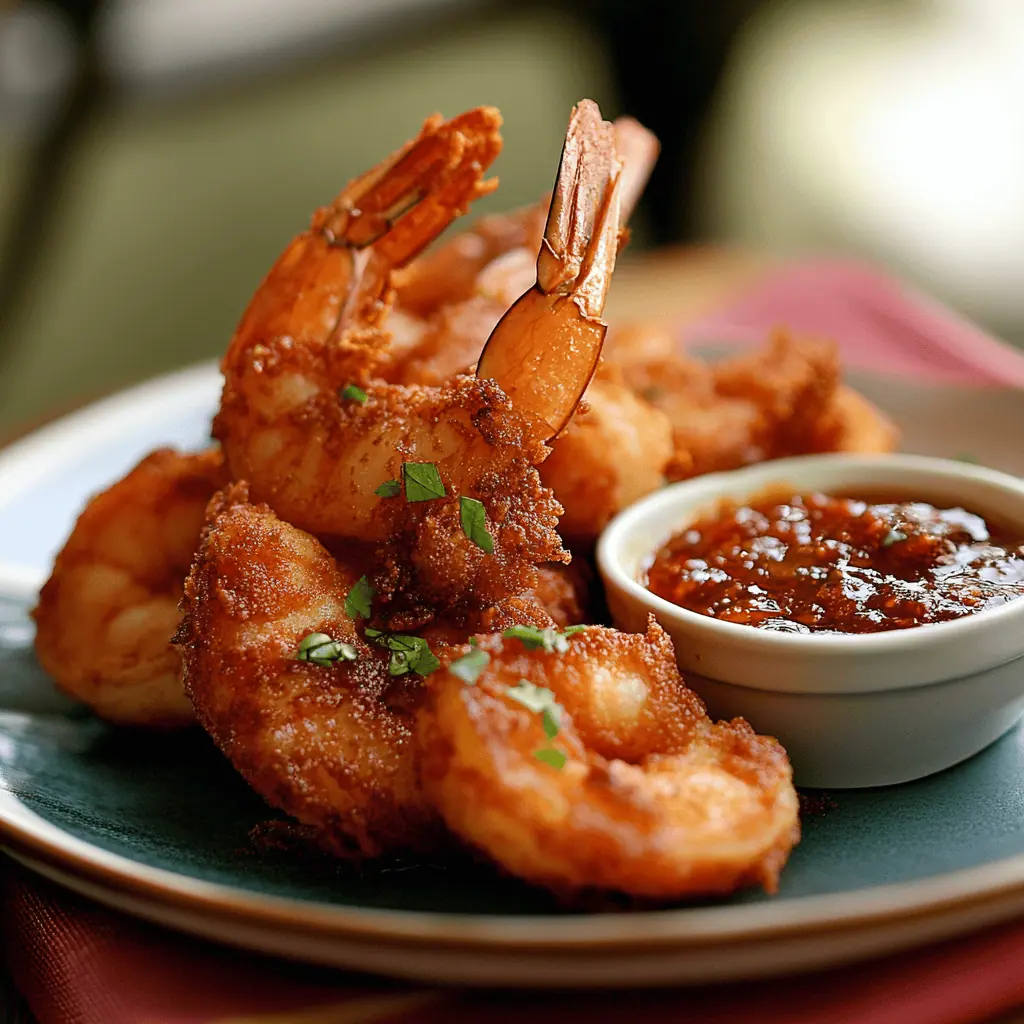
Why You'll Love This Recipe
- Perfect balance of crispy exterior and juicy interior
- Complex flavors from the alcohol marinade
- Easy to make with simple ingredients
- Authentically Filipino
- Great for parties and gatherings
- Can be prepared ahead
- Versatile serving options
Ingredients
Each ingredient in this recipe plays an essential role in creating the perfect Nilasing na Hipon. The small head-on shrimp provide maximum flavor and the perfect bite-size crunch. Gin (or traditional lambanog) tenderizes the shrimp while adding subtle complexity without overwhelming the natural sweetness.
Garlic infuses aromatic depth into both the marinade and dipping sauce. The flour-cornstarch combination creates the ultimate crispy coating that stays crunchy longer than flour alone. Finally, the vinegar-based sawsawan cuts through the richness with bright acidity, balancing each delicious bite with the perfect amount of heat and tang.

For the Shrimp:
- 1 pound small shrimp, head-on (51/60 count)
- ½ cup gin or rum (can use local lambanog)
- 4 cloves garlic, peeled and minced
- 2 teaspoons salt
- 1 teaspoon black pepper
For the Coating:
- ¾ cup all-purpose flour
- ¼ cup cornstarch
- Canola oil for deep frying
For the Spicy Vinegar Dip (Sawsawan):
- ½ cup white vinegar
- 2 cloves minced garlic
- 1 chopped bird's eye chili
- Salt and pepper to taste
Equipment
- Large mixing bowl: For marinating the shrimp effectively
- Deep heavy-bottomed pan or wok (kawali): Ensures even heat distribution during frying
- Kitchen thermometer: To monitor and maintain proper oil temperature
- Spider strainer or slotted spoon: For safely removing shrimp from hot oil
- Wire rack and baking sheet: Crucial for draining excess oil and maintaining crispiness
- Kitchen scissors: Makes trimming shrimp quick and easy
- Paper towels: For patting shrimp dry before coating
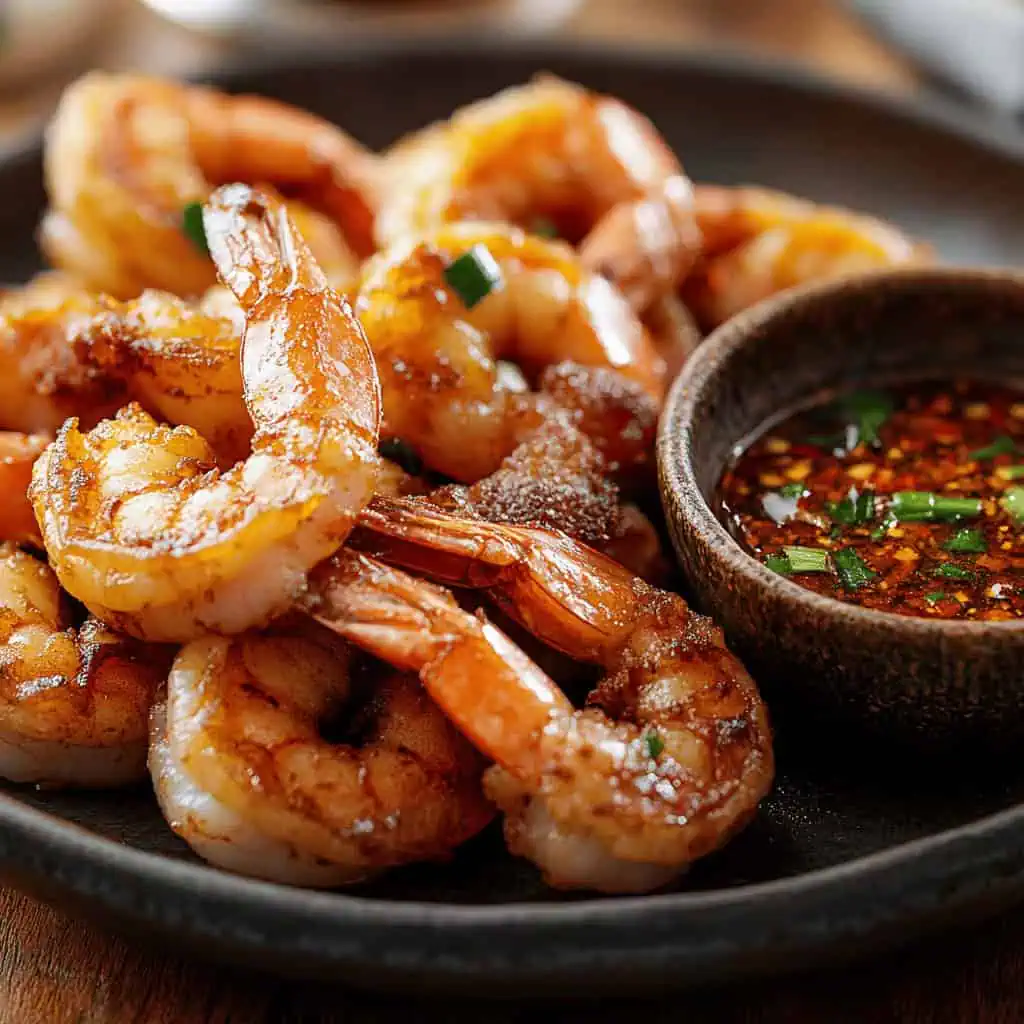
How To Make
- Prepare the shrimp: Using scissors, trim off the tendrils, wash thoroughly, and drain well. Pat the shrimp completely dry with paper towels - this ensures proper coating adhesion.
- Create the marinade: Combine gin or lambanog with minced garlic, salt, and pepper in a large bowl. Add the prepared shrimp and marinate for exactly 30 minutes - no longer, as the alcohol can start "cooking" the shrimp. Drain well and discard the marinade.
- Prepare the coating: While the shrimp marinate, whisk together all-purpose flour, cornstarch, and remaining salt and pepper. For easier coating, place the mixture and shrimp in a zip-lock bag and shake gently to coat evenly.
- Heat the oil: Heat oil in a deep pan or kawali to 350°F (175°C). Test the temperature by dropping a small amount of flour - it should sizzle immediately.
- Fry in batches: Fry the shrimp in small batches (6-8 pieces) for 2-3 minutes until golden brown, maintaining oil temperature between 350-375°F (175-190°C).
- Drain properly: Remove with a slotted spoon and drain on a wire rack, not paper towels, to maintain crispiness.
- Prepare dipping sauce: While frying, combine white vinegar, minced garlic, chopped bird's eye chili, salt, and pepper to make the sawsawan.
- Serve immediately: Enjoy hot with the spicy vinegar dip.

Tips from Lola's Kitchen
- Select the freshest shrimp: Look for bright, clear eyes and firm shells that smell fresh like the ocean, not fishy.
- Keep the heads on: The heads contain fat and flavor that make each bite more delicious and authentic.
- Double-coating technique: After the first coating, let the shrimp rest for 2 minutes before applying a second coat for extra crunchiness.
- Oil temperature is critical: Too low and they'll be greasy; too high and they'll burn before cooking through. Use a thermometer for best results.
- Don't overcrowd the pan: Fry in small batches to maintain oil temperature and ensure even cooking.
- Prepare the dip ahead: Make the sawsawan at least 30 minutes before serving to allow flavors to meld together.
- Serve immediately: These are at their peak crispiness right after cooking.
Substitutions
- Alcohol Options: Gin can be replaced with lambanog (coconut wine), rum, vodka, or even beer for different flavor profiles.
- Shrimp Size: If small shrimp aren't available, medium shrimp work well too – just adjust cooking time slightly.
- Coating Alternatives: Cornstarch can be substituted with potato starch for an even crispier result.
- Oil Choices: Any neutral oil with a high smoke point works – vegetable, peanut, or rice bran oil are good alternatives to canola.
- Non-Alcoholic Version: Though not traditional, you can substitute the alcohol with lemon juice, ginger, and a splash of fish sauce for flavor.
Troubleshooting
Coating falling off during frying:
- Ensure shrimp are completely dry before applying coating
- Let the coated shrimp rest for 3-5 minutes before frying to help coating adhere
- Maintain proper oil temperature throughout cooking
Shrimp not crispy enough:
- Oil temperature likely too low – use a thermometer to maintain 350-375°F
- Avoid overcrowding the pan which drops the temperature
- Use the wire rack for draining instead of paper towels
Too greasy or oily:
- Oil wasn't hot enough during frying
- Didn't drain properly on a wire rack
- Coated too thickly with flour mixture
Shrimp taste overcooked or rubbery:
- Marinated too long in alcohol (keep it to exactly 30 minutes)
- Fried for too long (2-3 minutes maximum for small shrimp)
- Oil temperature too low, causing longer cooking time
Storage & Reheating
Storage:
- Refrigerate leftovers in an airtight container for up to 2 days
- Not ideal for freezing as the texture will significantly deteriorate
Reheating for Maximum Crispiness:
- Oven method: Preheat to 350°F (175°C) and heat for 5-7 minutes on a wire rack
- Air fryer: 350°F for 2-3 minutes
- Avoid microwave reheating as it will make the shrimp soggy

FAQ
Why is it called "Nilasing na Hipon"?
"Nilasing" means "made drunk" in Filipino, referring to the alcohol marinade that infuses the shrimp with flavor.
Can I make this without alcohol?
Yes, you can substitute with a mixture of lemon juice, ginger, and a bit of fish sauce for flavor, though it won't have the same traditional taste and won't technically be "nilasing" anymore.
Can I remove the shells before cooking?
Traditional recipes keep shells on for extra crunch and flavor, but you can remove them for easier eating. Just reduce cooking time slightly to prevent overcooking.
How do I know when the shrimp are perfectly cooked?
They should be golden brown and curl into a loose "C" shape. If they curl into a tight "O", they're overcooked and might be tough.
Can I prepare this in advance for a party?
You can marinate and coat the shrimp up to 2 hours ahead and keep refrigerated, but frying should be done just before serving for the best texture and flavor.
What's the best way to eat nilasing na hipon?
Most Filipinos eat the entire shrimp, head, shell and all, enjoying the extra crunch and flavor. However, you can also peel the shell and just eat the meat if preferred.
What drinks pair well with this dish?
Cold beer is the traditional pairing, but it also goes well with white wine, gin and tonic, or even non-alcoholic beverages like calamansi juice.
Can I use frozen shrimp?
Yes, but thaw completely and pat very dry before marinating. Fresh shrimp will give the best flavor and texture.
Related
Looking for other recipes like this? Try these:
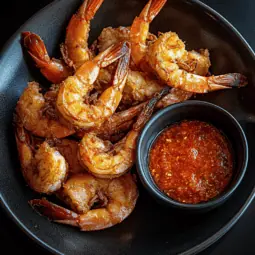
Crispy Nilasing na Hipon (Filipino Drunken Shrimp)
Equipment
- Large mixing bowl for marinating
- Deep heavy-bottomed pan or wok (kawali) for even heat distribution during frying
- Kitchen thermometer to monitor oil temperature
- Spider strainer or slotted spoon for removing shrimp from oil
- Wire rack and baking sheet for draining excess oil
- Kitchen scissors (Gunting) for trimming shrimp
- Paper towels for patting shrimp dry
Ingredients
For the Shrimp:
- 1 pound small shrimp head-on (51/60 count) (hipon)
- ½ cup gin or rum you can use local lambanog
- 4 cloves garlic peeled and minced (bawang)
- 2 teaspoons salt asin
- 1 teaspoon black pepper paminta
For the Coating:
- ¾ cup all-purpose flour arina
- ¼ cup cornstarch corn starch
- Canola oil for deep frying mantika
For the Spicy Vinegar Dip (Sawsawan):
- ½ cup white vinegar suka
- 2 cloves minced garlic bawang
- 1 chopped bird's eye chili siling labuyo
- Salt and pepper to taste asin at paminta
Instructions
- Begin by preparing the shrimp (paghahanda ng hipon). Using scissors, trim off the tendrils (mga pangit), wash thoroughly, and drain well. Pat the shrimp completely dry with paper towels - this ensures proper coating adhesion.
- Create the marinade by combining gin or lambanog with minced garlic (bawang), salt (asin), and pepper (paminta) in a large bowl. Add the prepared shrimp and marinate for exactly 30 minutes - no longer, as the alcohol can start "cooking" the shrimp. Drain well and discard the marinade.
- While the shrimp marinate, prepare the coating by whisking together all-purpose flour (arina), cornstarch (corn starch), and remaining salt and pepper. For easier coating, place the mixture and shrimp in a zip-lock bag and shake gently to coat evenly.
- Heat oil (mantika) in a deep pan or kawali to 350°F (175°C). Test the temperature by dropping a small amount of flour - it should sizzle immediately. Fry the shrimp in small batches (6-8 pieces) for 2-3 minutes until golden brown, maintaining oil temperature between 350-375°F (175-190°C).
- Remove with a slotted spoon and drain on a wire rack, not paper towels, to maintain crispiness. Serve immediately with spicy vinegar dip (sawsawan) made by combining white vinegar (suka), minced garlic, chopped bird's eye chili (siling labuyo), salt, and pepper.
Tips from Lola's Kitchen
- Choose fresh shrimp with bright, clear eyes and firm shells
- Don't remove the heads - they add extra flavor and crunch
- Make sure shrimp are completely dry before coating
- Double-coating method: dip in flour mixture, shake off excess, let rest for 2 minutes, then coat again
- Keep fried shrimp warm in a low-temperature oven (170°F/75°C) while cooking remaining batches
Nutrition
The Story Behind Nilasing na Hipon (Filipino Drunken Shrimp)
Like many beloved Filipino pulutan dishes, Nilasing na Hipon (Drunken Shrimp) was born from our culture's creative approach to combining seafood and spirits. This crispy, gin-infused shrimp dish emerged from the coastal regions of the Philippines, where fresh seafood meets our love for social drinking and innovative cooking methods.
Legend has it that the dish was discovered by accident in the 1960s when a local carinderia owner in Navotas, one of Metro Manila's major fishing hubs, accidentally spilled gin into a container of fresh shrimp. Instead of wasting good seafood, the cook decided to fry them anyway, leading to the delightful discovery that alcohol not only enhanced the shrimp's natural sweetness but also created an incredibly crispy texture when fried.
Today, you'll find Nilasing na Hipon in almost every Filipino restaurant and beach-side eatery, particularly in coastal areas like Roxas City, the seafood capital of the Philippines. The dish has evolved from its humble beginnings to become a staple of Filipino drinking culture, joining the ranks of iconic pulutan favorites like sisig and chicharong bulaklak.
What makes this dish truly special is its versatility with local spirits. While gin remains the traditional choice, many regions have adapted the recipe to use local alternatives. In Southern Luzon, some cooks swear by using lambanog (coconut wine) for a more tropical flavor profile, while others experiment with rum or even beer. Each variation adds its own unique character to the dish, though the core technique remains the same.
The popularity of Nilasing na Hipon extends beyond its taste – it represents the Filipino talent for transforming simple ingredients into extraordinary dishes. The recipe showcases our knack for balancing flavors and textures: the crispy exterior gives way to succulent shrimp meat, while the subtle hints of alcohol and garlic create a complexity that keeps you reaching for more.
Whether you're enjoying it at a family gathering, a beachside restaurant, or a local puluhan, Nilasing na Hipon continues to be a testament to Filipino culinary creativity. It's more than just drunken shrimp – it's a celebration of our coastal heritage, innovative spirit, and the joy of sharing good food with great company.
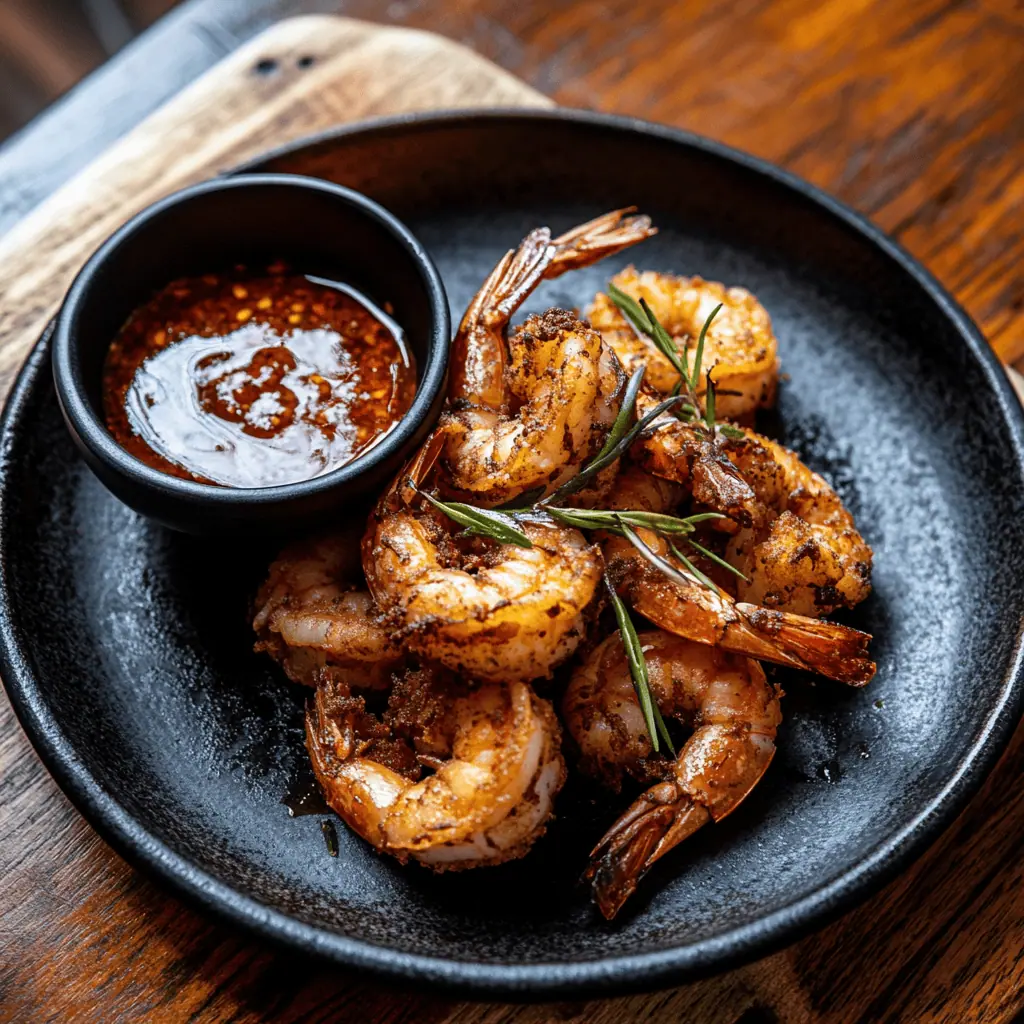






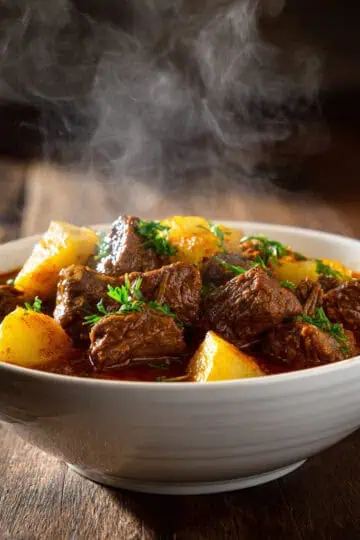
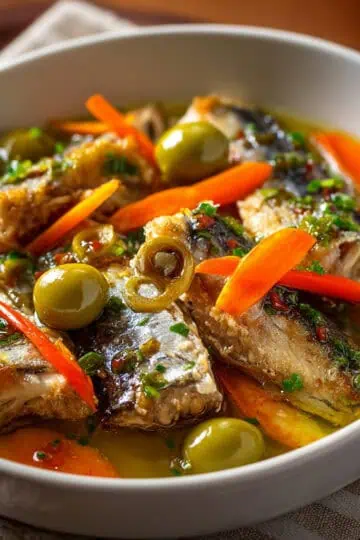
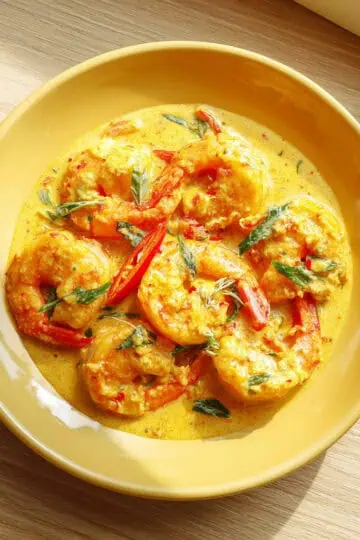
Scottraw says
Delicious!!